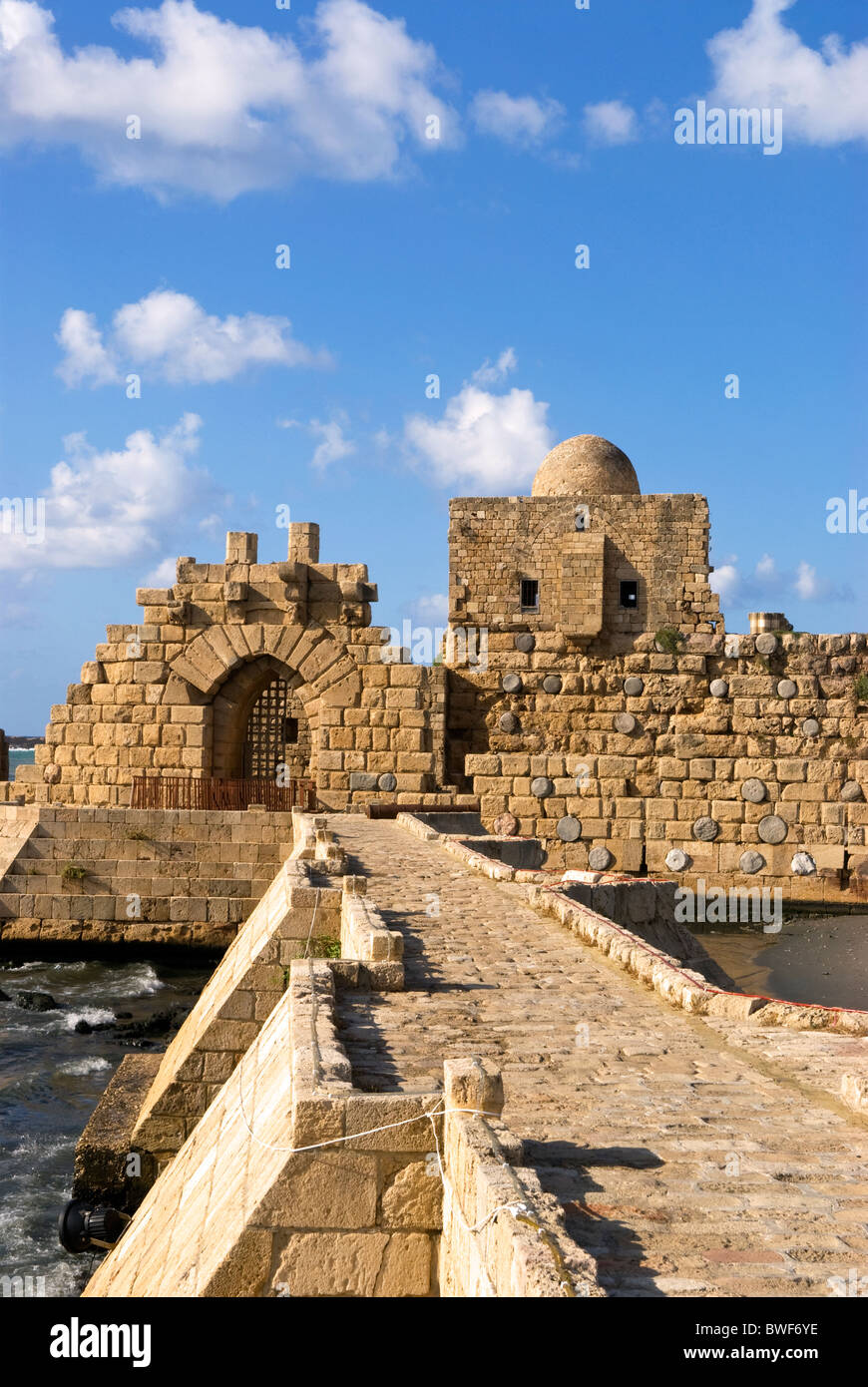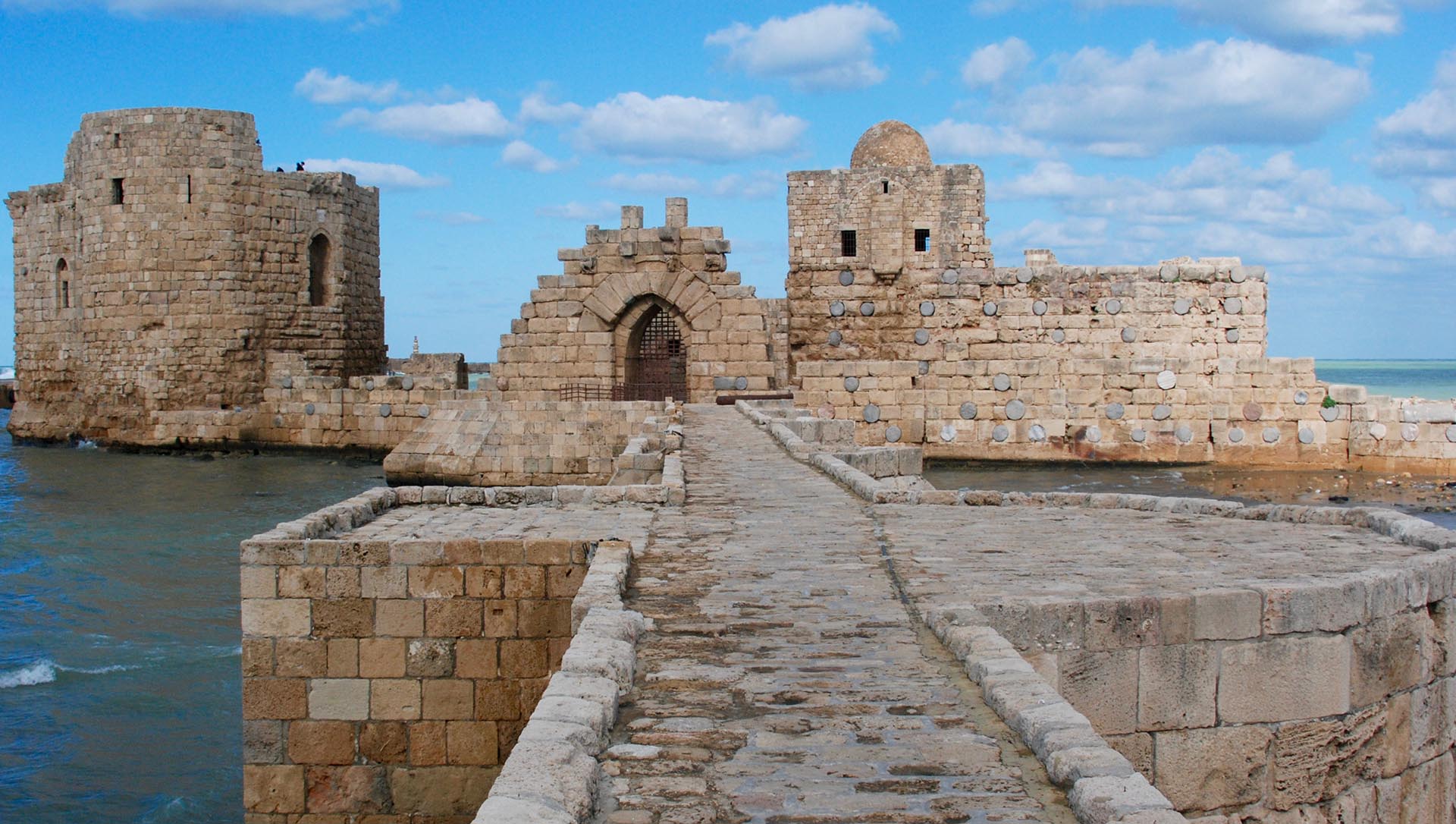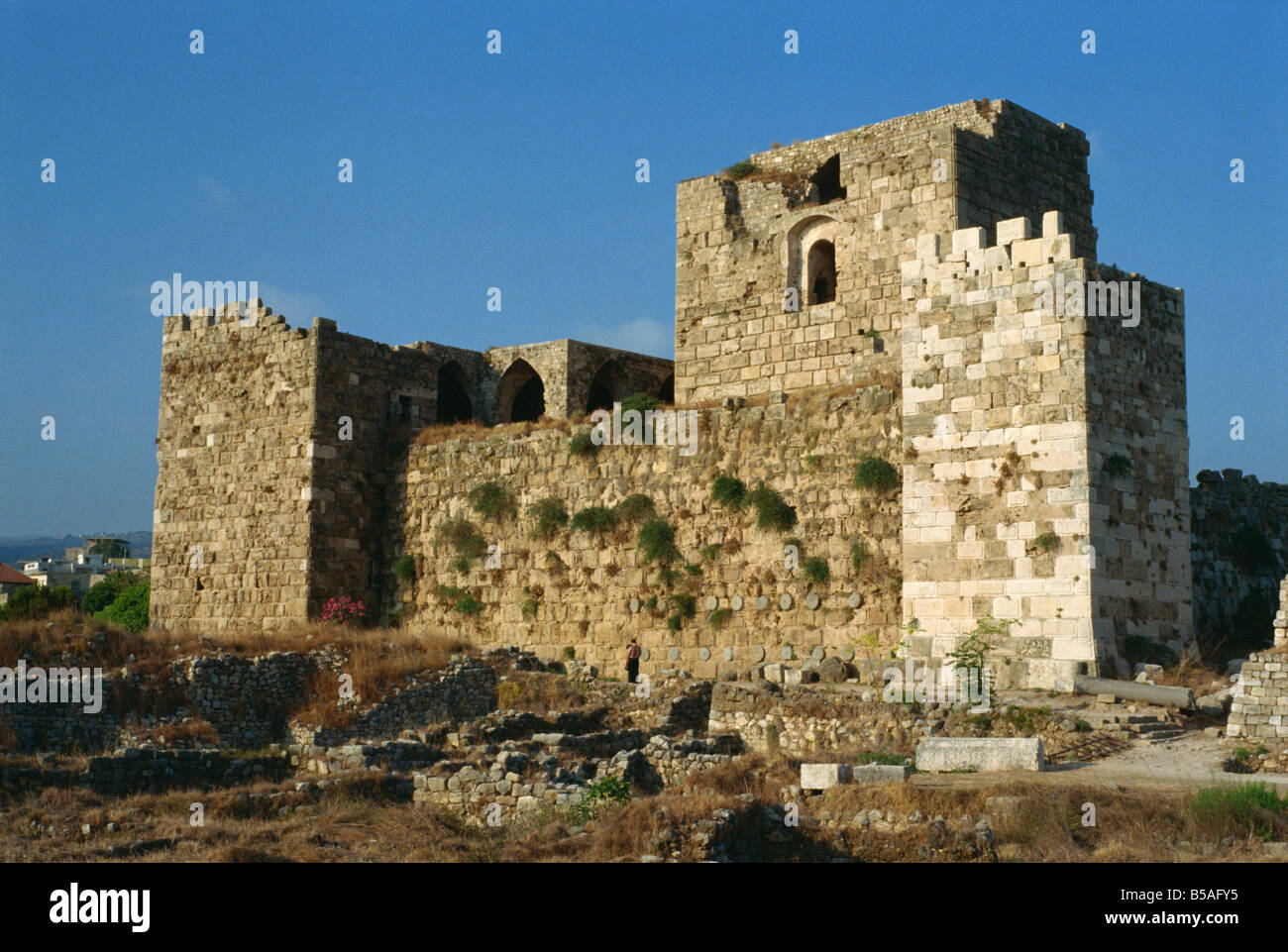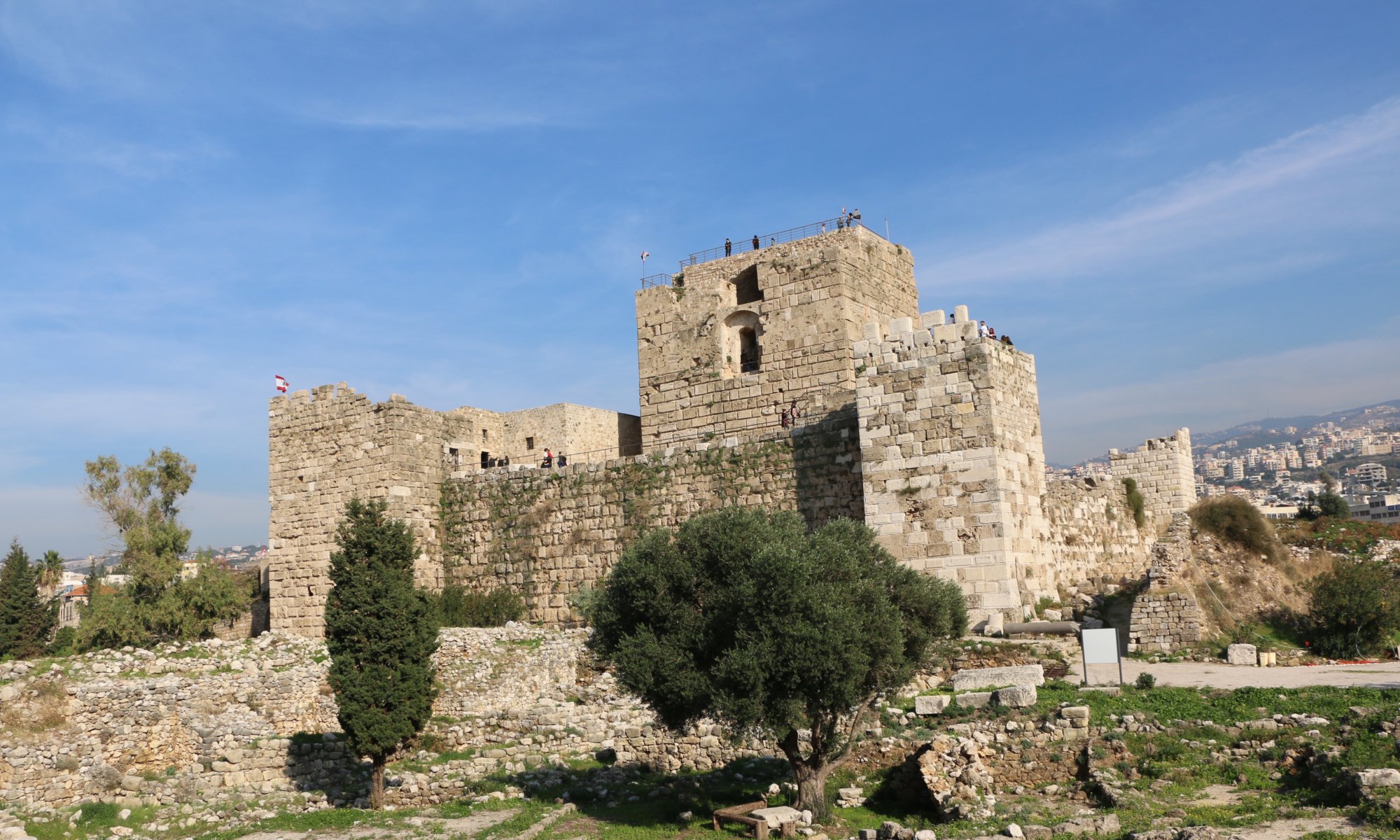
Sidon Sea Castle, a Fortress Built by the Crusaders. Lebanon Editorial Stock Image Image of
Description The fortresses built between the 12th and 15th centuries - Montfort, Belvoir, Atlit, Arsuf (as well as Acre and Caesarea) - evidence broad European architectural movement to the Holy Land in this series of remarkable fortresses constructed in the course of the Crusader conquests.

Crusader Sea Castle, Sidon, LEBANON Stock Photo, Royalty Free Image 32911522 Alamy
A restored 12th-century Crusader castle surrounded by a 10m-wide dry moat is located just inside the entrance to Byblos' atmospheric archaeological site. It's an impressive building that offers an excellent perspective over the ruins from the top of its foursquare keep. A series of Bronze Age dwellings is clearly visible below the walls as you.

The Crusader Castle Byblos Jbeil Lebanon Editorial Photography Image of castle, crusaders
Description The Sea Castle was built by the crusaders in the thirteenth century as a fortress of the holy land. It is one of the most prominent historical sites in the port city of Sidon, Lebanon.

Lebanon, Liban 2005 Sydon Crusader's Fortress YouTube
June 7, 2017 Heritage Lists 10 Crusader Castles 10 examples of castles in the Eastern Mediterranean and Middle East, founded or occupied during the Crusades. 1 - Krak des Chevaliers - Syria Krak des Chevaliers is a Crusader castle in Syria and one of the most important preserved medieval castles in the world.

10+ Unbelievable Crusader Castles in Lebanon — THE REMOTE TRAVELLER
Byblos Castle, is the second crusader castle in Lebanon, in Byblos. In the time of the Crusaders, it was known as the Castle of gbeil. It is still the best preserved castle from the time of the Crusaders. It was built in 1104 and composed of three floors, protected by four towers on each corner of the castle and a fifth one near the mean entrance.

View of Front of Crusader Sea Castle Sidon, Lebanon (PID000014) American Society of Overseas
20 Apr 2021 @LuceJuiceLuce About Saint Gilles Castle Once a powerful Crusader castle, today the fortress of Raymond de Saint-Gilles towers above the modern city of Tripoli, Lebanon. The original Crusader fort was largely destroyed at the end of the 13 th century before being rebuilt by the Mamluks.

Byblos Crusader Fortress Lebanon Middle East N Boyd Stock Photo, Royalty Free Image 20515689
Written By Connor Garrett Welcome to our list of the most unbelievable Crusader castles in Lebanon! Lebanon is home to a number of Crusader castles and citadels, many of which are in a state of ruin today. The Crusaders were a group of European knights who came to the Holy Land during the 11th and 12th centuries to fight for control of the region.

Crusader Fortresses in South Lebanon with ArcheoAct « Lebtivity
The Crossword Solver found 30 answers to "Port city in Lebanon that contains the country's largest Crusader fortress (7)", 7 letters crossword clue. The Crossword Solver finds answers to classic crosswords and cryptic crossword puzzles. Enter the length or pattern for better results. Click the answer to find similar crossword clues .

Sidon Sea Castle Was Built by the Crusaders in the Thirteenth Century As a Fortress of the Holy
The port city of Akko (also known as Acre) is located on a promontory at the northern end of Haifa Bay. The earliest city was founded during the Bronze Age at Tel Akko (in Arabic Tel el-Fukhar - mound of the potsherds), just east of the present-day city. Akko is mentioned in ancient written sources as an important city on the northern coast.

LEBANON'S stunning crusader 🏰 castle in TRIPOLI, top sites! YouTube
Sidon's Sea Castle ( Arabic: قلعة صيدا البحرية, romanized : Kalaat Saida al-Bahriya) was built by the crusaders in the thirteenth century as a fortress of the holy land. It is one of the most prominent historical sites in the port city of Sidon, Lebanon . History The city of Sidon is located on the Mediterranean coast of Lebanon.

The Crusader Castle Byblos Jbeil in Lebanon Middle east Stock Photo Alamy
SEPTEMBER 23, 2021 18:04 Tourists walk at the sea castle of the port-city of Sidon, southern Lebanon October 3, 2011. (photo credit: REUTERS/ALI HASHISHO) A mass grave uncovered in Sidon,.

Crusader Castle Byblos (Jbeil) Lebanon Castle, Lebanon, Mansions
Archaeologists in Lebanon have unearthed two mass graves containing the remains of 25 Crusaders killed in the 13th century. The team found the skeletons of the young men and teenage boys in Sidon.

Crusader castle / Ancient site at Byblos, Lebanon ⋆ The Passenger
Mseilha Fort Coordinates: 34.273804°N 35.690072°E The Mseilha Fort ( Arabic: قلعة المسيلحة, romanized : Qal'at al-Msaylḥa) is a fortification situated north of the village of Hamat in Lebanon. The current fort was built by Emir Fakhreddine II in the 17th century to guard the route from Tripoli to Beirut.

Crusader Sea Castle, Sidon (Lebanon) Stock Photo Image of fantasy, nature 12329034
[1] This is a list of castles in the Eastern Mediterranean and Middle East, founded or occupied during the Crusades. For crusader castles in Poland and the Baltic states, see Ordensburg . Sidon's Sea Castle built by the crusaders as a fortress of the holy land in Sidon, Lebanon. Crusader states Geographic location on today's map

Crusader Castle standing guard over the pretty port of Byblos (Jbail), Lebanon Stock Photo Alamy
The city of Sidon is located on the Mediterranean coast of Lebanon, and throughout its history which dates as far back as 4000 BC, has been of great religious, political, and commercial value. Sidon Sea Castle was built in 1228 AD by the Crusader Knights of St John of Hospital and Jerusalem. Built on a small island in the Port of Sidon, it was.

Sidon Sea Castle Was Built by the Crusaders in the Thirteenth Century As a Fortress of the Holy
Citadel of Raymond de Saint-Gilles. Towering above Tripoli and the river, this Crusader fortress was originally built during the period from 1103 to 1104. Burned down in 1297, it was partly rebuilt the following century by a Mamluk emir and is still used by the Lebanese military. Today, it's an impressive structure whose most impressive element.